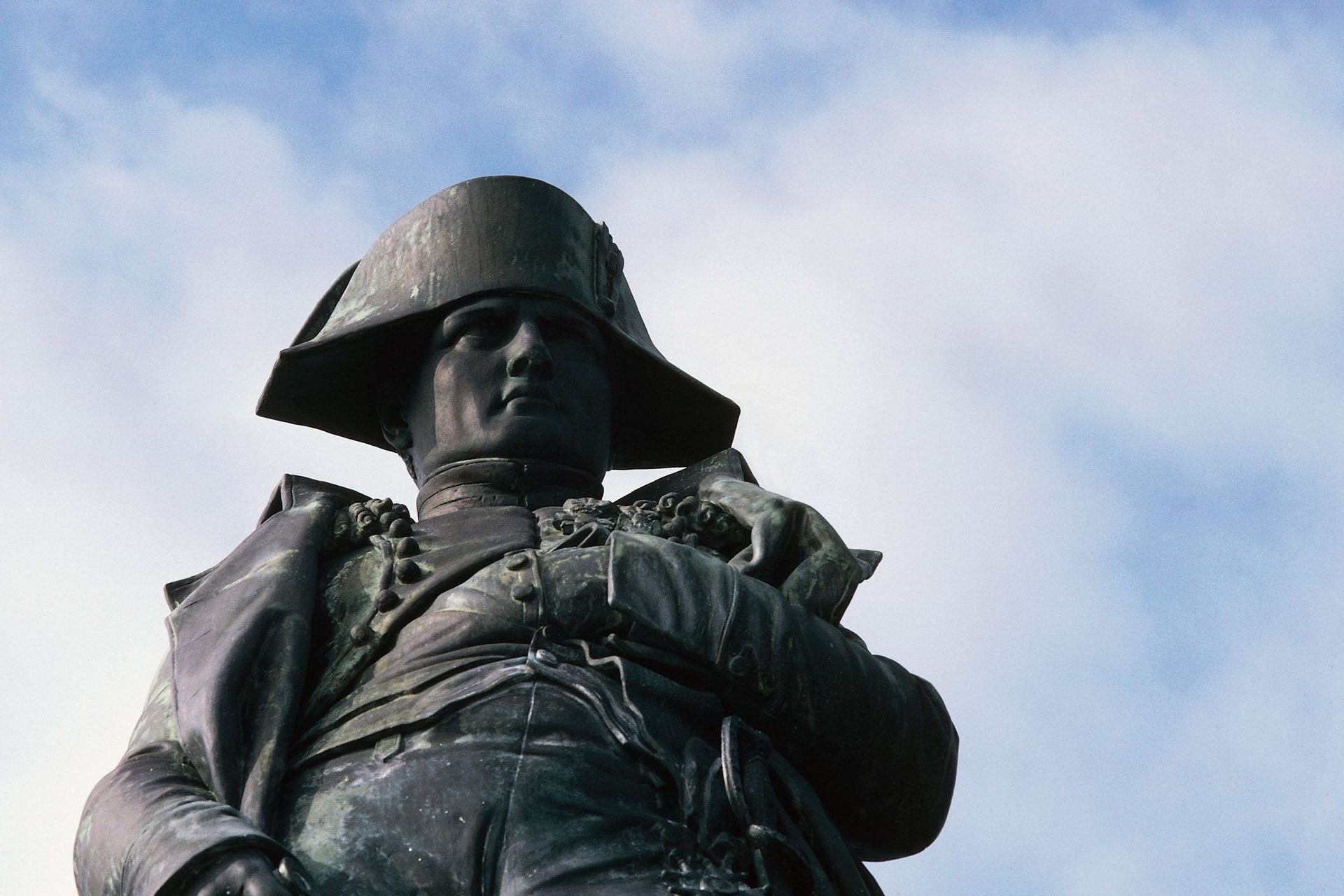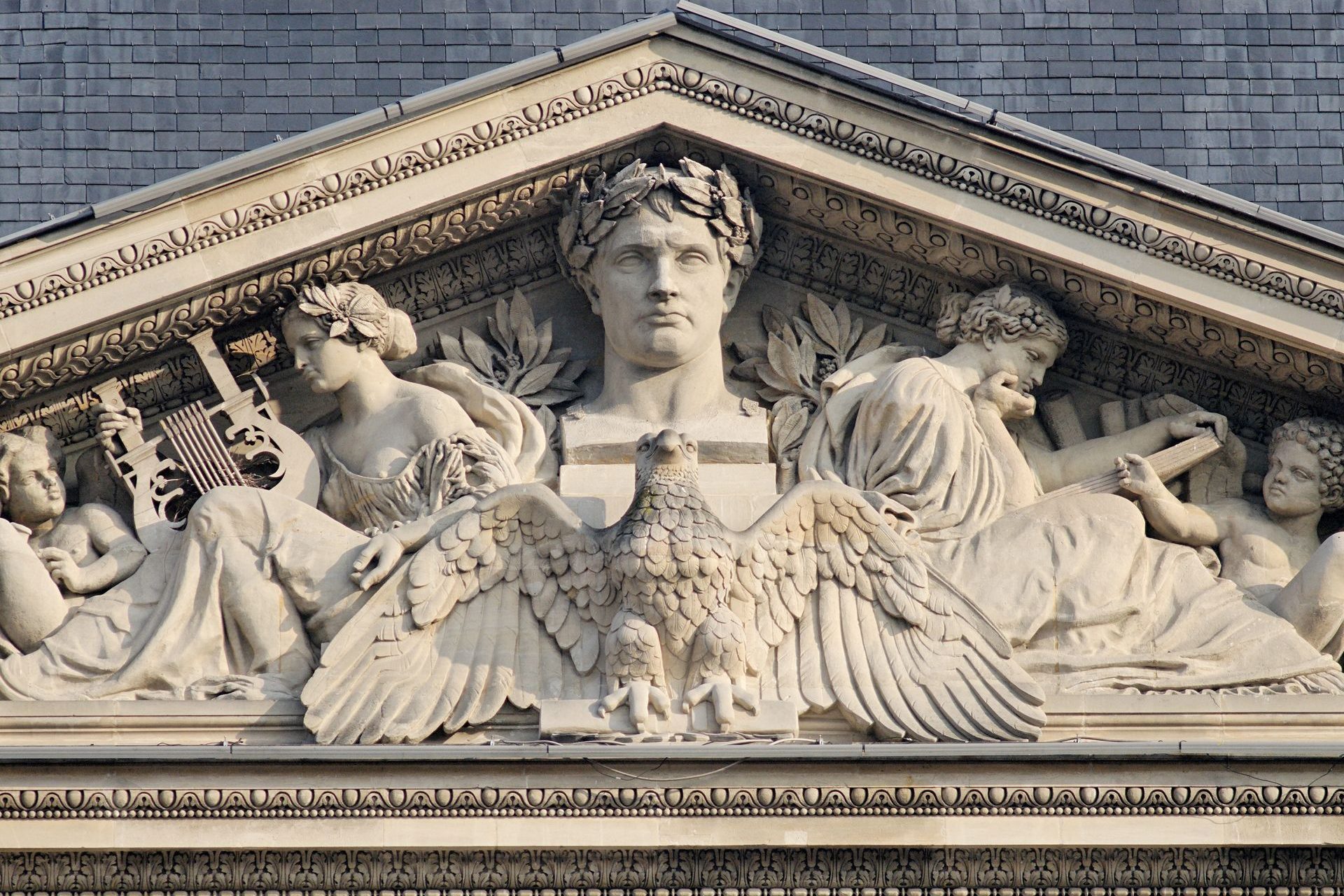Napoleon's greatest battles and other facts of his life
More than two centuries after the death of the emperor, the Napoleonic epic continues to fascinate us, as shown by the buzz surrounding Ridley Scott's biopic. Rediscover the 20 most significant dates and battles in the history of Napoleon I.
Napoleon Bonaparte was born on August 15, 1769, in Ajaccio, on the island of Corsica.
As a young officer, Bonaparte made a name for himself at the age of 25 during the siege of Toulon. The French Revolution had started a few years ago and, in this battle, he managed to repel the British and royalist troops. His achievement earned him the rank of general the same year.
Two years later, General Bonaparte distinguished himself once again by suppressing a royalist insurrection in Paris. He got help from another young officer who would become one of his main comrades in arms, Joachim Murat.
That same year, the future emperor met an ambitious woman, Joséphine de Beauharnais, with whom he fell madly in love. The couple married the following year and Josephine was crowned empress along with Napoleon in 1804.
The year 1796 marks the beginning of the Italian campaign and the Napoleonic legend. Bonaparte triumphed over several Austrian armies and then organized the country into republics allied with France.
Welcomed as a hero on his return to Paris, the young soldier took command of the Army of the East which reached Egypt in 1798. It was on this occasion that the enigma of the hieroglyphs was deciphered by the French philologist Champollion.
In 1799, Bonaparte established himself as a political leader in the coup d'état of 18 Brumaire (November 9 in the revolutionary calendar). The revolutionary Directory ended and Napoleon became First Consul.
This new status was still insufficient for Napoleon. He established an empire and was crowned on December 2, 1804. The coronation scene at Notre Dame in the presence of the Pope was immortalized by the painter Jacques-Louis David. On this occasion, he also crowned his wife Joséphine.
In October 1805, the French navy suffered a crushing defeat against the British fleet commanded by Horation Nelson at Trafalgar. This battle allowed England to establish its hegemony at sea despite France's domination of the continent.
However, victories kept coming for the Grande Armée of France. One year after his coronation, Napoleon crushed the Austrian and Russian armies at Austerlitz, even though they had numerical superiority.
The following year, the victory at Jena against Prussia offered the emperor the opportunity to dissolve the Holy Roman Empire and reorganize Germany into a confederation under French influence.
In 1807, Napoleon won two decisive victories against Russia at Eylau and Friedland. These gave him control over a large part of the continent. He then made peace with Alexander I, the Tsar of Russia.
In 1809, the Grande Armée won another decisive victory against Austria at Wagram. It was a costly victory though, and it's been considered the bloodiest battle of the Napoleonic Wars.
Napoleon divorced his great love Joséphine de Beauharnais (image) because she appeared unable to give him a legitimate heir. He then married Marie-Louise, the daughter of the Emperor of Austria, in 1810. Their union enabled him to make peace between the two countries that had been fighting for almost twenty years.
In 1812, Napoleon decided to invade Russia. After a terrible defeat at Borodino, the French army was forced to retreat. It was a major turning point in the history of the Empire.
The following year, allied European empires fought Napoleon in Leipzig. They beat him in what would be called the 'Battle of the Nations.'
With his army defeated, Napoleon had to abdicate. The monarchy would be restored temporarily in France while the former Emperor was exiled to the island of Elba in Italy.
Napoleon escaped from the island of Elba in March 1815 and rallied his former supporters. They all returned to Paris and began a second ephemeral reign: the Hundred Days.
In June 1815, Napoleon lost the Battle of Waterloo against the coalition of all European powers. This defeat marked the definitive end of the First Empire in France.
Captured by the British, Napoleon was imprisoned on the distant island of Saint Helena in the South Atlantic Ocean. There, he died in 1821.
Altogether, the Napoleonic period wasn't that long, but it was an intense and tumultuous time for France and Europe.
Follow Showbizz Daily for other engaging, illustrated stories
































